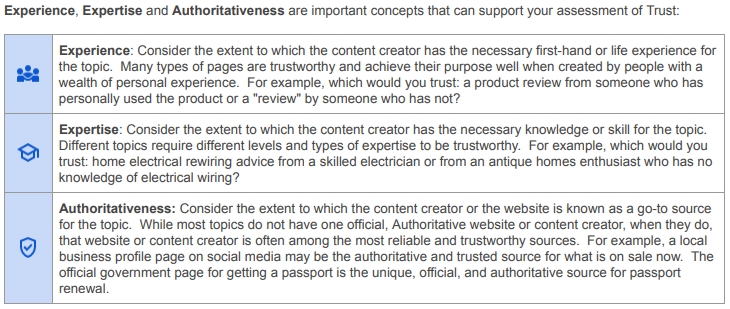In late 2022, OpenAI launched ChatGPT, and the world was never the same. Since that launch, countless competitors have thrown their hat in the ring and accelerated a cycle of artificial intelligence-driven change that was inevitable as soon as the world realized how far AI has come.
In the two years since the launch of ChatGPT, generative AI has soaked up a significant portion of the search engine traffic that used to go to traditional SERPs. This has prompted content creators to adapt their search engine optimization tactics to include another element in the optimization calculation: Generative Engine Optimization or GEO.
This emphasis on GEO and SEO is happening now because AI search already works — and it’s gaining momentum. Generative search may not be able to address everything, but its solutions are at least as good as a standard search engine in many situations.
The question is, how can content creators and marketing leaders incorporate GEO into their marketing strategies? Here’s what you need to know about this new and exciting area of the Internet.
Before we dig into the ways you can incorporate GEO into your traditional SEO strategy, let’s look at some of the Generative AI tools transforming the marketplace. This isn’t just for fun. It sheds light on an important new reality of GEO marketing: we aren’t exclusively catering to Google rankings anymore.
Honestly, we’re not even catering to Google anymore.
You can get answers from an AI tool that has nothing to do with Google’s search engine. We already mentioned ChatGPT, which is focused on providing human-like, conversational answers to questions.
Perplexity is another one that emphasizes concise, fact-based, and cited responses. Gemini and Google AI Overviews blend search-based results with AI-generated text summaries. Microsoft’s Copilot is a productivity-based AI tool that optimizes work experiences.
These are just a few of the big AI platforms. And don’t misunderstand. Google is still the biggest fish in the pond. It just isn’t the only fish worth caring about anymore. There are countless others both in existence and coming down the pipeline. The era of machine learning and AI technology providing answers to search queries has officially dawned, folks.
The most important difference between the results provided by these generative AI tools and traditional SEO tools is that you aren’t trying to rank at the top of a list. You want your text to be incorporated into an AI-generated answer (and thus featured as a source for that answer).
Google AI Overviews, for instance, include “cards” that show where it sourced its information. These showcase multiple sources and are displayed along with the AI text to allow users to dig deeper into an answer if they wish.

The question for marketers and content creators is how to incorporate this new generative AI reality into their marketing strategy creation.
User intent is the driving force behind AI responses. These are intended to personalize responses for specific user queries. Make sure every piece of content you create has a strong emphasis on how it serves the user.
For example, you trying to inform on a simple concept? This is something likely to be pulled into a Google AI overview, so write your content knowing that. Get straight to the point quickly and clearly.
AI responses aren’t mysterious. They’re right there, available for everyone to see. Use that to your advantage. Study how AI responds to topics where you are an authority. Then, optimize your content to provide information that is easy to incorporate into those AI solutions.
Review the keywords that are important to your business and evaluate which have AI overviews showing up for them. Once you know what is being prioritized by AI overview, you can adjust and update content accordingly.
E-E-A-T content is Google’s acronym for high-quality content. It must flash expertise, experience, authority, and trustworthiness. In other words, make sure your content strategy is relentless in its pursuit of providing exceptional and insightful solutions for your target audience.
The best content and most authoritative brands will show up in generative engines, so make sure you’re priming your content and your brand to be just that with E-E-A-T tactics.

Optimization remains essential, but its specifics are changing (or at least expanding). Along with traditional SEO, generative engine content optimization should focus on holistic messaging. In addition to comprehensively and clearly communicating important information, this includes a range of keywords that relate to the core subject and should be backed by solid technical GEO (which basically follows technical SEO practices).
Search engines aren’t going anywhere anytime soon. However, the Google-dominated, search-driven behaviors of the past are quickly becoming obsolete. In their place, we are seeing a rapid rise in AI-driven search engines that are already dominating top-of-funnel questions and answers.
Gartner predicts that traditional search engine volume could drop by a quarter in the next couple of years. This is because generative search and AI-driven tools are working. They may not have all of the answers. Still, they are siphoning away a significant portion of search queries — especially for simple things, like how to convert from imperial to metric measurements or what continent Montana is located on.Generative search is gaining momentum, which means businesses must react now if they want to stay ahead of this technological revolution. If you need help understanding generative engine optimization and how it integrates with search engine optimization practices, our team at Relevance can help. Reach out for a free strategy session, and together, we can make sure you stay ahead of this epic-defining shift in the online marketing world.